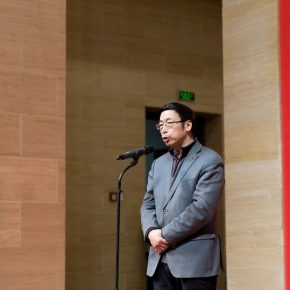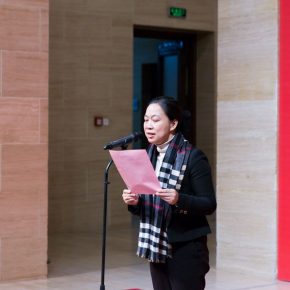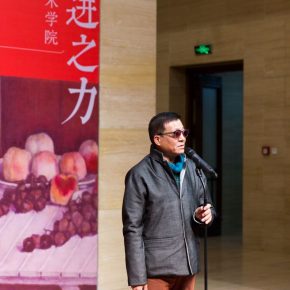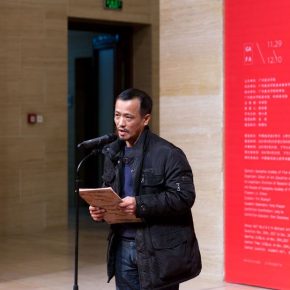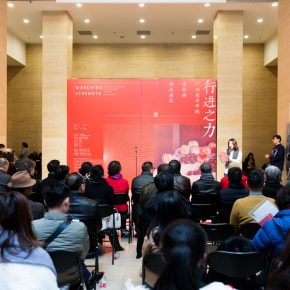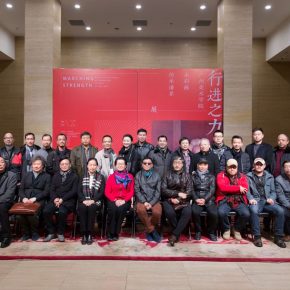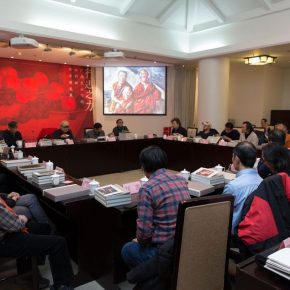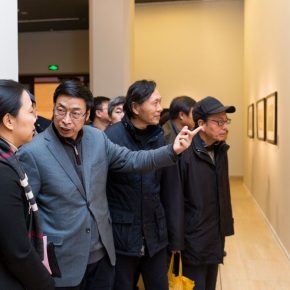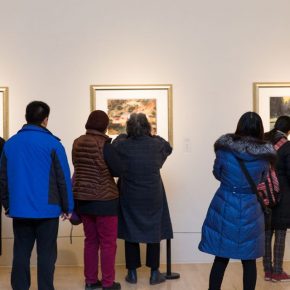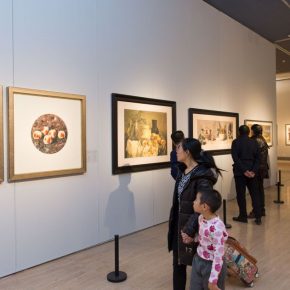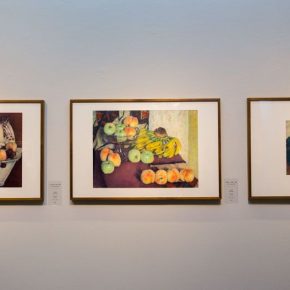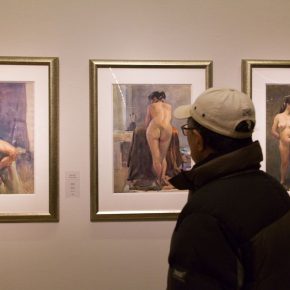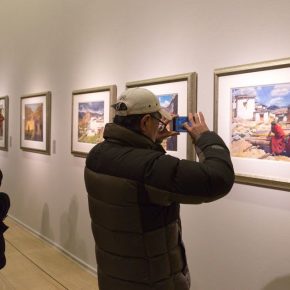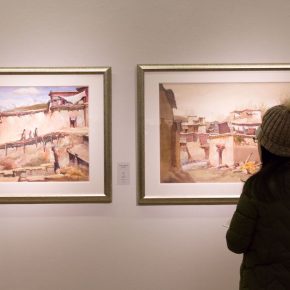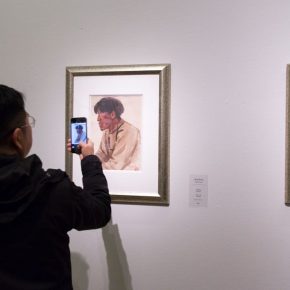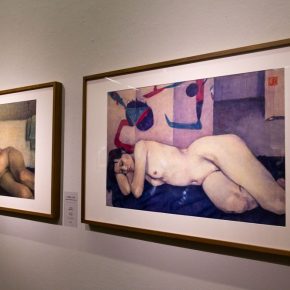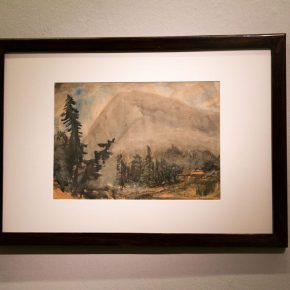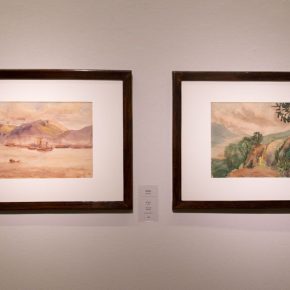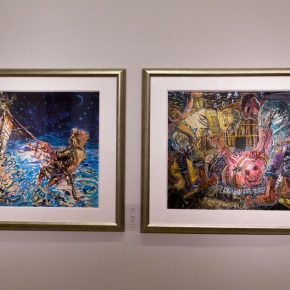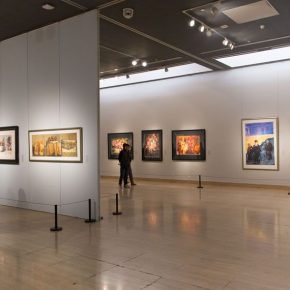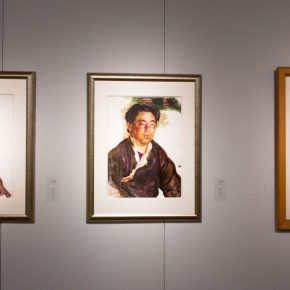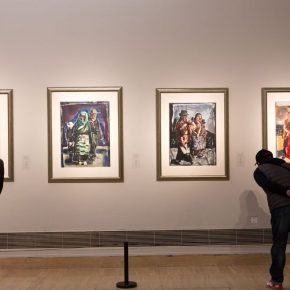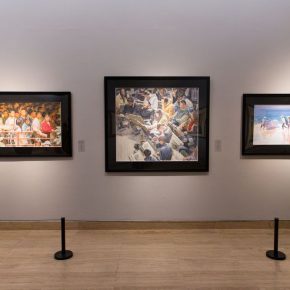
On November 29, 2017, “Marching Strength – Watercolor Painting Heritage Pedigree of Guangzhou Academy of Fine Arts” opened in the National Art Museum of China. It is hosted by the Guangzhou Academy of Fine Arts, and organized by the School of Art Education at the Guangzhou Academy of Fine Arts, focusing on more than 100 pieces created by 7 generations of painters from the Guangzhou Academy of Fine Arts and sorts out the development of watercolor painting in the academy over the past 6 decades, in order to present a complete picture of the prosperity and leap in the painting style in more than half a century. From the pioneered artist Li Tiefu to the young artists, it reflects the reform and innovation of watercolor art in the academy.
Although the watercolor painting has developed over more than one hundred years in China, it has the position in basic teaching training in the college for a long time, which has become a means for the training of oil painting and color perception, the aesthetic subjectivity as an art style is in a state of absence. As the curator Prof. Yin Shuangxi said at the opening ceremony: the exhibition was held in the National Art Museum of China which was a great event for both the teaching of the Guangzhou Academy of Fine Arts, and the Chinese watercolor painting, because watercolor painting was thought to be a “minor painting style”. The show focuses on the long history of watercolor discipline of Guangzhou Academy of Fine Arts with many outstanding painters emerging from generation to generation, and developing an independent aesthetic value.
The exhibition is a study of “Heritage Pedigree”, using time as a clue, combined with the representative works of the artists, to form a whole historical narrative, also drawing the outline of the artistic features experienced by seven generations of watercolor painters. Li Tiefu is a pioneer of Chinese watercolor painting, and one of the first generation of the pedigree, and it presents his watercolor of “Mount Emei in Sichuan Province”, revealing a strong flavor of literati landscape, and “The Bottle of Flower” manifests the strong performance of color. Wang Zhaomin, a representative of the second generation of watercolor painters advanced the watercolor art to a new peak, and became the model of the Chinese watercolor painting of the 20th century, the images of human body are plump and stocky in his creation, which is as solid and vigorous as oil painting, and it has changed the traditional understanding of watercolor painting. Hu Juzhan and Chen Xiu'e were trained after the founding of new China, and the painters of the third generation of Guangzhou Academy of Fine Arts, Chen Xiu'e was skilled in the watercolor painting of flowers, landscapes, and characters, and the works reveal a prominent integrity, with the presentation of the one combining the shape and color, blending water and color. Hu Juzhan’s watercolor paintings pay more attention to the expression of atmosphere of a grand scene. And, it was more important that they had many successors in watercolor painting which presented the pedigree inherited in order. Wu Zhengbin belonged to the fourth generation, and he has a rigorous and firm basic skill. He would like to choose objects when he drew, and successfully changed the lightness to the vigorousness of watercolor, offering watercolor a unique opportunity for new possibilities. The fifth-generation watercolor artists are the backbone for creation at present, such as Long Hu, the leader of the School of Art Education at the Guangzhou Academy of Fine Arts, Ye Xiangming, Dean of the Lingnan Academy of Painting, Li Yanxiang, who highlights the characters’ inner spiritual state by freehand brushwork, Yang Peijiang, who pays attention to the reflection of life in creation, and they boldly innovate, vigorously promoting the development of watercolor. Chen Chaosheng, Xu Yiguan, Chen Haining, and Liu Kai belong to the sixth generation, and they have a certain internal consistency in terms of the target that they pursue. Chen Dongrui and Li Jinjian belong to the seventh generation, and the aesthetic taste & language of watercolor painting are the characteristics of the new generation, which also shows the direction for the future of watercolor painting.
The exhibition is on show at hall 2, 6 of the National Art Museum of China, and presents a clear context of art, also as the curator Prof. Yin Shuangxi depicted: starting from Li Tiefu who early introduced the enlightenment practice of the Western oil painting and watercolor painting, to a generation of painters represented by Wang Zhaomin, who researched the laws of plastic language, and the middle-age painters’ exploration of the language characteristic of watercolor painting, as well as young artists’ recent expansion of watercolor patterns, the Guangzhou Academy of Fine Arts has formed a solid foundation, with a diverse exploration of form, constantly paying attention to real life, profoundly exploring the private world of the artists, building a brilliant world of watercolor painting in Guangdong.
It remains on view till December 10.
Text and photo by Zhang Wenzhi, translated by Chen Peihua and edited by Sue/CAFA ART INFO


